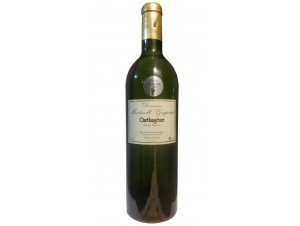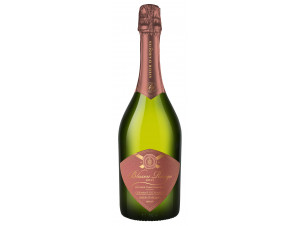You have no items in your shopping cart.
Wine Languedoc-Roussillon
-
Top Selling
-
Top Selling-24%
-
Top Selling-20%
- -17%
- -36%
- -21%
- -23%
- -24%
- -20%
- -25%
The Wines of Languedoc-Roussillon Rely on an Exceptional Terroir and a Rich History
In Languedoc-Roussillon, the tradition of the vine is ancestral and goes back to the time of the Greeks. Having conquered the south of France, the Romans knew how to cultivate it and spread it throughout the region. Thus, the locality of Languedoc-Roussillon has a very rich and millenary history. At the same time close to Spain, the Pyrenees and Catalonia, but also to the Mediterranean Sea, its geographical situation is exceptional.
This region is a true crossroads at the crossroads of cultures and influences, from which it has been able to draw the best. Moreover, Languedoc-Roussillon is known and recognized for the excellence of its wine and agricultural products. The region supplies the country with a variety of foodstuffs such as fruits, vegetables, flowers and cereals.
For a very long time, the peasant population of Languedoc-Roussillon has known how to produce wines and refine its wine techniques over the centuries.
The Languedoc also has an A.O.C Languedoc wine. The latter replaces the appellation formerly named Coteaux du Languedoc. There are thirteen sub-regional appellations such as A.O.C Malpère or Limoux. Cabardès, Minervois, Minervois-La Livinière as well as Faugères, A.O.C Saint-Chinian, Clairette du Languedoc, Corbières, Corbières-Boutenac, Costières de Nîmes, Crémant de Limoux or Fitou are protected. Four Muscats are also present. They are all white wines protected by a communal appellation.
Finally, a last category of dry white wines has a communal appellation. Indeed, the Clairette de Bellegarde is a wine appreciated by connoisseurs. It is produced only in the Limoux region in the Aude.
The wines of Languedoc-Roussillon benefit from an exceptional climate between sea and mountain
The vineyards of Languedoc-Roussillon border the Mediterranean Sea and thus benefit from a warm and dry temperate-Mediterranean climate, unique in the world. It is located between the sea and the mountains, which gives this terroir a very special climate not found in other parts of France. Here, the sun shines more than 300 days a year!
Thus, in Languedoc-Roussillon an exceptional environment gives a particular flavor to the wines. The soils are very different depending on the location of the grape variety and the vines. There are in particular limestone parts and clayey soils. There is also in places schist, gneiss but also granite. In order to allow the vines to grow in the best conditions, the populations have created particularly well exposed terraces. In terms of surface area, the Roussillon vineyards extend over nearly 20,600 hectares and produce each year more or less 621,000 hectoliters of wine.
Let us note however that the average yield in Languedoc-Roussillon varies according to the appellations. It generally ranges from 20 hectoliters per hectare for Banyuls to 60 hectoliters per hectare for Clairette. 224400 hectares of vines are planted in the Languedoc. In total there are no less than 245,000 hectares of vines in the Languedoc-Roussillon, making it a particularly wine-producing region, whose overall surface area is one of the largest in France. This very large quantity of vines, and counting all the estates of Languedoc-Roussillon, produces no less than 2.4 million hectoliters of quality wine.
This is an annual production for the whole region. This is enough to satisfy an increasingly demanding public, sometimes intransigent on quality, and to provide it with very different and varied wines, whether red wines, white wines, muscats or rosés. Let us note the more important production of organic wines in recent years.
Varieties of the Languedoc-Roussillon
Different grape varieties are to be pointed out and in particular for the red wine the grenache, the mourvèdre as well as the syrah, the carignan or the cinsault and the muscardin. About the white wine, we find the varieties of Bourboulenc, white Grenache, Marsanne, but also Roussanne, Macabeu, white Carignan, Clairette, Picpoul or even Mauzac and Muscats. In short, the varieties are very varied in the wine region of Languedoc-Roussillon, which allows to produce heterogeneous wines.
Recognizing the wines of Languedoc-Roussillon
The tasting a wine is quite an art, especially in such a sunny country that offers a particularly remarkable diversity of wines. The Languedoc is famous for its round but also harmonious wines. On the contrary, the Roussillon produces much more traditional wines. These are known to be fleshy with fruity and spicy notes. White wines are described as fine and delicate.
Here, we find flavors with citrus fruit aromas, white flesh fruits such as white peach, but also much more surprising floral scents. As a result, it seems that the land of sunshine produces wines with a variety of flavors that will seduce the finest connoisseurs.
Consequently, one can find in Languedoc-Roussillon both white flowery wines with delicate aromas, but also red wines which constitute 85% of the wine production of the region. Depending on the grape variety, we will discover in the latter, violet aromas or nuances of red fruit such as blackcurrant, strawberry or cherry. So many subtleties that will delight all consumers.
The best wines from Languedoc-Roussillon
It is important to know that Languedoc-Roussillon counts in its region no less than 28 Appellations d'Origines Contrôlées (AOC-AOP), but also 25 Protected Geographical Indications (IGP). Proof, if proof were needed, of the richness and diversity of the terroirs and wines. The very first appellation dates back to July 30, 1936! Already at that time, a collective awareness made it possible to realize that wine was not just an agricultural product like any other, but a real treasure to be preciously protected.
It should also be noted that some communes concentrate the best appellations, including wines from Banyuls, Collioure, Saint-Jean-de-Minervois, or Lesquerde and Tautavel. If the origin allows us to recognize the best wines, the years of production also count.
Indeed, as connoisseurs certainly know, there are exceptional years in wine production, especially when weather conditions, and first and foremost rainfall and sunshine, are combined. The years 1990, 1991, 1995, 1998, 2001, 2003, 2004, 2005, 2006, and 2010 can be indicated as outstanding.
Join the wines of Languedoc-Roussillon with food
The food and the wines are a perfect match, especially when they come from the same terroir. It is still necessary to know a little bit about cooking and to be able to match the food with good wines. Here, we will offer you some recommendations in order to sublimate your meals and delight your guests. If you are going to choose wines from Languedoc-Roussillon, you will have to match each meal with a very specific wine.
So, if you decide to eat roasted meat or game in sauce, you will have to go for a red wine. The same goes for a blue-veined cheese, a mixed salad garnished with gizzards or poultry liver. For example, you could very well enjoy your meal accompanied by a Minervois wine, a Saint-Chinian, a Corbières or why not a Faugères.
To recognize a fruity wine, a few clues and tricks exist. The robe should be ruby red with bluish reflections. In mouth, you will find aromas of morello cherry or violet. Some AOC wines such as Corbières, Cabardès and Minervois will do the trick. You would like to make an aperitif or a dinner party or something with a touch of spice?Prepare olives, tapenade or even tapas. Your starters and light salads but also all your white meats a la plancha or barbecue will be ideally accompanied by a rosé wine. It can also be served with pizzas as well as fish.
If you want to eat southern cuisine, Mediterranean cuisine, grilled fish, or even fish in sauce; or taste typical regional dishes such as the famous bouillabaisse, be accompanied by white wines from Languedoc-Roussillon.
There are several Muscats in the Languedoc-Roussillon region. We can mention the Frontignan, the Mireval, the Lunel and also the Saint-Jean de Minervois. The Muscats wines are original in that they have a aroma and scents of yellow fruits such as peach and apricot. More original, it is quite possible to match wines with exotic dishes! Indeed, rosé wines can be enjoyed with chili con carne, couscous, paella, lamb curry or moussaka!
By associating foreign cuisine and wines from Languedoc-Roussillon you may well surprise your guests. Always in the same way, a dry white wine can come to sublimate spring rolls, pizzas but also tacos. Amazing isn't it? Red wines can also go well with grilled meats such as mechoui from North Africa, or lacquered duck whose original recipe comes from Asia.
Finally, and we have saved the best for last, rosé wines as well as dry white wines go wonderfully with raw fish dishes. So, as you revel in these wines from Languedoc-Roussillon, remember to let yourself be seduced by sushi, sashimi or tarama. You won't be disappointed, and you might even "risk" repeating the experience to surprise your friends and family.
The Most Famous Domains and Castles of Languedoc-Roussillon
In the heart of Languedoc-Roussillon, we find estates and chateaux with a very high reputation. Their fame goes beyond the borders and some prestigious wines are even exported very well. Among the 2500 estates, there are some real rare pearls. 230 cooperative cellars are swarming in the Languedoc-Roussillon region, and this large-scale economy supports nearly 30,000 winegrowers! A real record! One of them is the domaine de la Grange des Pères represented by Laurent Vaillé, a Languedoc winegrower, who provides a wine that is very highly rated on the market.
Le Clos des Fées is another example of the excellence of wine production in Languedoc-Roussillon. To paint a picture, to say the least, it is in the very heart of the garrigue, at the foot of the French Pyrenees, that the vines take the time to grow to provide the precious juice. This juice, gorged with the sunshine of the South of France, will be used to produce exceptional vintages.
We should also mention here the Vignoble de la Rectorie. Located in the commune of Banyuls-sur-Mer, facing the sea, a team of enthusiasts has been running this farm since 1984. The adventure began with the production of a vintage ! Quite a program! Finally, it is necessary to point out the presence of organic wines, such as those of the Domaine de la Grange des Pères, the Domaine du Canet Valette, de Clavel, de Magnon or even the Mas d'Agalis..
Winemakers
Listed 1668 winemakers
Production
2.4 million hectolitres per year
Area
42,800 ha
Soil and subsoil
Schist, sandstone, chalk scree, sand, clay, etc.
Grape variety
Reds and rosés : Cabernet Sauvignon, Carignan, Cinsault, Merlot, Mourvèdre, Grenache Noir, Pinot Noir, Syrah for red wines and rosés
Whites : Bourboulenc, Clairette, Chardonnay, Chenin, Grenache Blanc, Grenache Gris, Maccabeu, Malvoisie, Marsanne, Muscat Blanc, Sauvignon Blanc, Viognier for white wine
Blanquette méthode ancestrale
Coteaux-du-Languedoc Cabrières
Coteaux-du-Languedoc Grès-de-Montpellier
Coteaux-du-Languedoc La Méjanelle
Coteaux-du-Languedoc Montpeyroux
Coteaux-du-Languedoc Pézenas
Coteaux-du-Languedoc Saint-Drézéry
Coteaux-du-Languedoc Terres de Sommières
Côtes-du-Roussillon Les Aspres
Côtes-du-Roussillon-Villages Caramany
Côtes-du-Roussillon-Villages Latour-de-France
Côtes-du-Roussillon-Villages Lesquerde
Languedoc Grés de Montpellier
Muscat-de-Saint-Jean-de-Minervois
Pays d'Oc Gewurztraminer
Saint-Chinian Berlou
Saint-Chinian Roquebrun
Vin de Pays Cathare
Vin de Pays de Cassan
Vin de Pays de Caux
Vin de Pays de Cucugnan
Vin de Pays de la Cité de Carcassonne
Vin de Pays de la Côte Vermeille
Vin de Pays de la Haute Vallée de l'Aude
Vin de Pays de la Vallée du Paradis
Vin de Pays de la Vaunage
Vin de Pays de la Vicomté d'Aumelas
Vin de Pays de Saint-Guilhem le Désert
Vin de Pays des Collines de la Moure
Vin de Pays des Coteaux d'Ensérune
Vin de Pays des Coteaux de Miramont
Vin de Pays des Coteaux de Murviel
Vin de Pays des Coteaux de Peyriac
Vin de Pays des Coteaux du Pont du Gard
Vin de Pays des Coteaux du Salagou
Vin de Pays des Coteaux Flaviens
Vin de Pays des Côtes Catalanes
Vin de Pays des Côtes de Prouilhe
Vin de Pays des Côtes de Thau
Vin de Pays des Côtes de Thongue
Vin de Pays des Côtes du Brian
Vin de Pays des Hauts de Badens
Vin de Pays des Pyrénées-Orientales
Vin de Pays des Sables du Golfe du Lion
Vin de Pays du Mont Baudile
Vin de Pays du Torgan
Vin de Pays du Val de Montferrand









































 TWIL - Achat de Vin
TWIL - Achat de Vin


